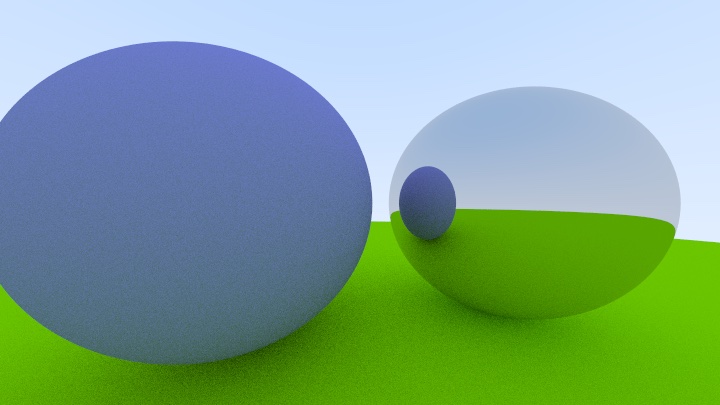Sometimes you learn the most by doing. That’s what I realized yet again when writing a toy raytracer in Rust during what little free time I had during paternity leave. I had religiously watched all of the Rust videos by No Boilerplate and needed to stop watching and start writing. I came across the Peter Shirley’s Raytracer In A Weekend tutorial, written in C++, and decided to try following along and writing it in Rust.
Last I left off, I was able to create a reflective material, which was fun.

Writing a toy raytracer in Rust helped me to fill some of the gaps in my learning so far, including:
- Traits
- Tuples
- Modules
- Operator Overloading
- Type Aliasing
- File I/O
Something that surprised me (but shouldn’t have) was that the C/C++ style of calling a method on mutable objects was noticeably less efficient than returning them. Kudos to Warren Henning for pointing this out when I was frustrated at the amount of time going into rendering a relatively small and simple image.
For example, any implementation of this C++ header:
class material {
public:
virtual bool scatter(
const ray& r_in, // input ray
const hit_record& rec, // input hit record
color& attenuation, // output color if return value is true, otherwise nullref
ray& scattered // output ray if return value is true, otherwise nullref
) const = 0;
};
Was noticeably faster after simplified in Rust to:
pub trait Material {
fn scatter(
&self,
ray: &Ray,
hit_record: &HitRecord
) -> Option<(Color, Ray)>;
}
Whenever I get the time, I would love to rewrite the renderer from the beginning with multithreading, better command-line input/output, and overall cleaner code in mind. Beyond that, I’d love to expand it to have a scene file format, simple animations, a GUI, GPU support, and more.
For now, I want to finish off the Rustlings coding exercise and attempt to widen my range of Rust projects to include full-stack web development, artificial intelligence, and embedded development.